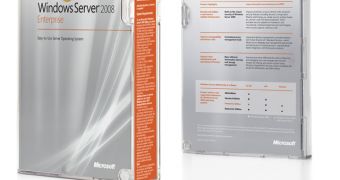The start of this week marked yet another chapter in the Windows vs. Linux saga, another example of how the “vs.” is fading more and more. A new Windows and Linux marriage was inked by rivals Microsoft and Red Hat, but solely in the church of virtualization. The two companies stressed that the marriage was far from a joint agreement and that, in fact, there were separate agreements that would have the duo test and validate their respective server-side operating systems on one another's hypervisors. At the end of the testing and validation period, Microsoft and Red Hat will offer support for scenarios in which Windows Server and Red Hat Enterprise Linux (RHEL), will be deployed virtualized on top of Microsoft and Red Hat virtualization solutions.
“Microsoft and Red Hat recently signed agreements to test and validate our server operating systems running on each other’s hypervisors. Customers with valid support agreements will be able to run these validated configurations and receive joint technical support for running Windows Server on Red Hat Enterprise virtualization, and for running Red Hat Enterprise Linux on Windows Server 2008 Hyper-V or Hyper-V Server 2008,” Mike Neil, general manager of virtualization at Microsoft, revealed.
Per the agreement, customers will be able to deploy Windows Server 2008, Windows Server 2003 SP2, or Windows 2000 Server SP4 and later on top of a specific version of the Red Hat Enterprise virtualization, which will be announced at a later date. At the same time, Red Hat Enterprise Linux 5.2 (x86), Red Hat Enterprise Linux 5.2 (x64), Red Hat Enterprise Linux 5.3 (x86) and Red Hat Enterprise Linux 5.3 (x64) will be supported to run on uni-processor virtual machines on top of Windows Server 2008 Hyper-V (all editions) and Microsoft Hyper-V Server 2008.
“Red Hat has joined Microsoft’s Server Virtualization Validation Program, and Microsoft is now a Red Hat partner for virtualization interoperability and support. Microsoft will be listed in the Red Hat Hardware Certification List once we’ve completed the Red Hat certification process in H2. In addition to the agreements, Microsoft will publish Linux Integration Components for RHEL when the testing and validation is complete. The folks at Red Hat tell me that they’ll provide WHQL [Windows Hardware Quality Labs] drivers for a variety of Windows Server versions. So not only will you get cooperative technical support, you’ll also get high-performing enlightened VMs,” he added.
Neil revealed that neither Microsoft, nor Red Hat were ready to deliver a deadline when customers would be able to take advantage of the new support offerings. However, Microsoft's GM for virtualization promised that the validations were already underway and that the results would be comprehensive. Still, Neil indicated that the validation processes were separate and specific to each company and that customers would be able, in this context, to benefit from support starting at separate dates.
“The world of IT today is a mixture of virtualized and non-virtualized environments. Red Hat is looking to help our customers extend more rapidly into virtualized environments, including mixed Red Hat Enterprise Linux and Windows Server environments,” Mike Evans, vice president, Corporate Development at Red Hat, maintained. “Red Hat listened when our customers asked us to provide interoperability between our respective guest and host virtualization solutions. We are excited to announce these agreements today as the result of our collaboration with Microsoft.”

 14 DAY TRIAL //
14 DAY TRIAL //